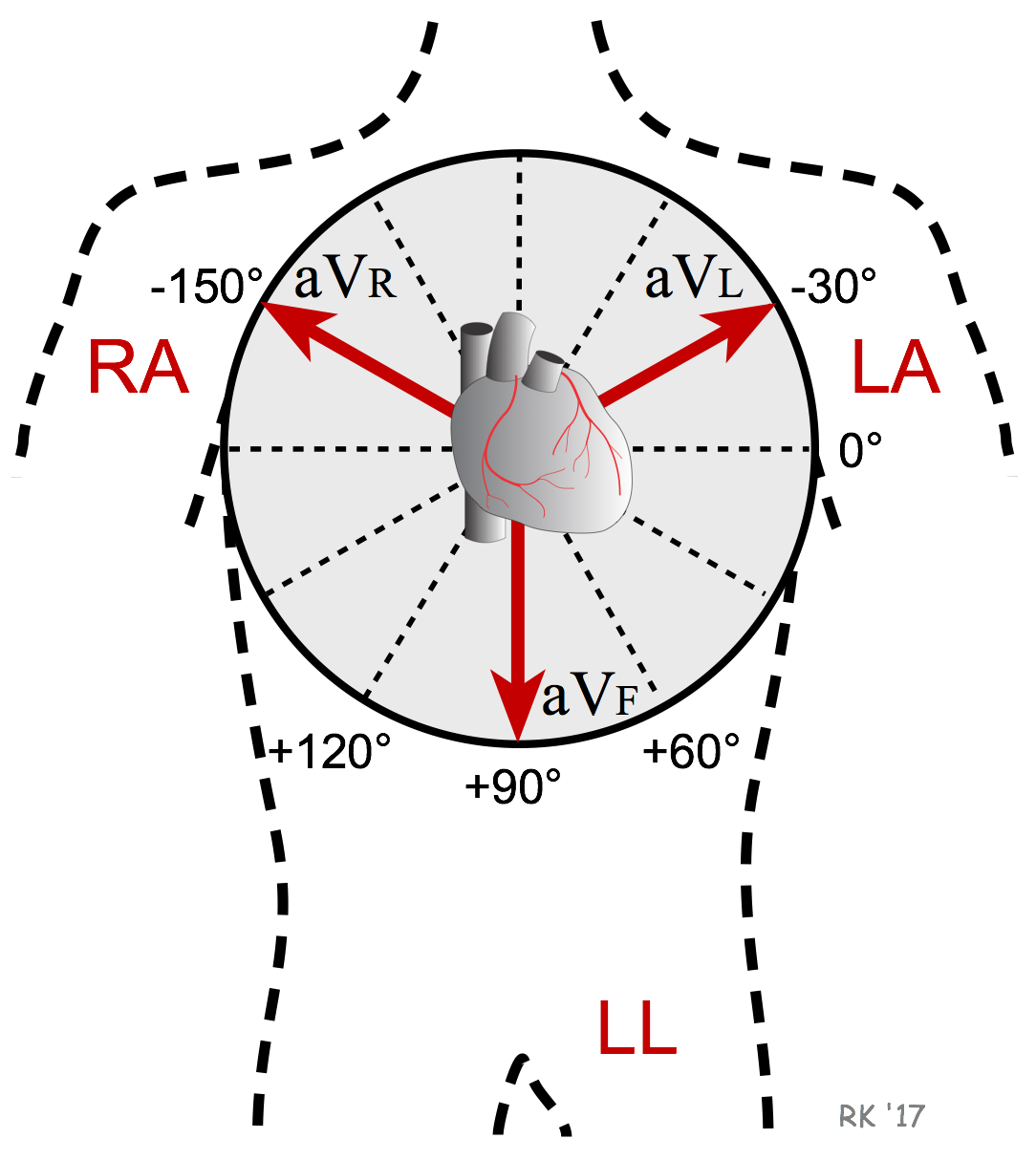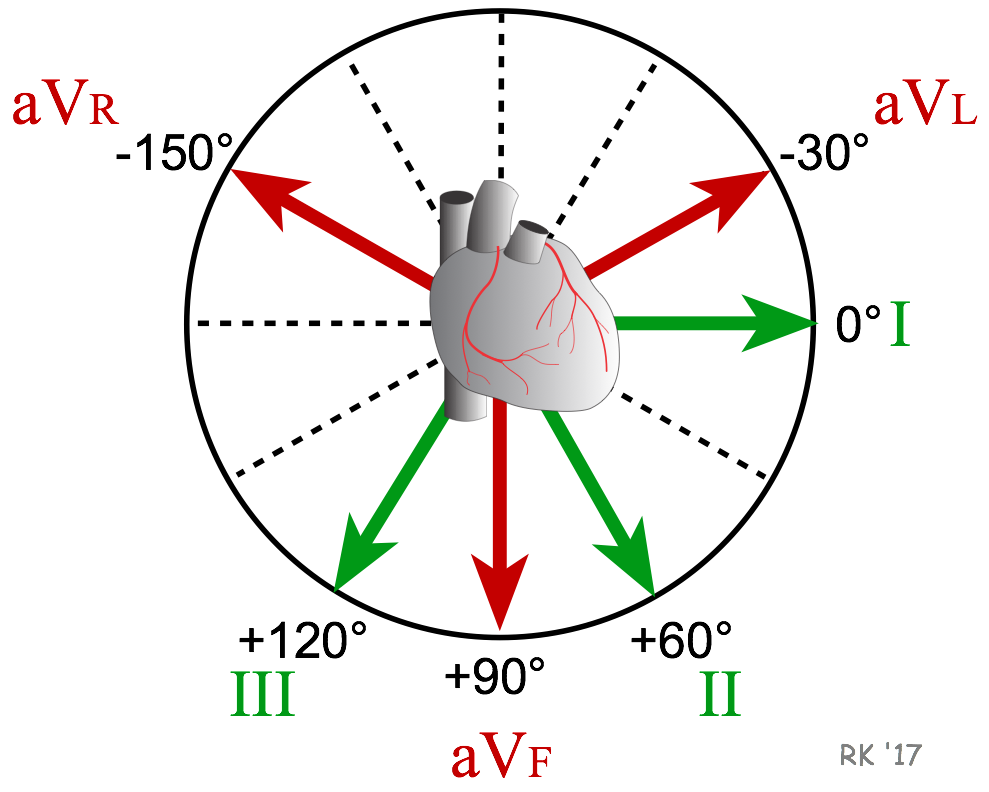Electrocardiogram Augmented Limb Leads (Unipolar)
 Besides the three bipolar limb leads, there are three augmented unipolar limb leads. These are termed unipolar leads because there is a single positive electrode that is referenced against a combination of the other limb electrodes. The positive electrodes for these augmented leads are on the left arm (aVL), the right arm (aVR), and the left leg (aVF). These are the same electrode locations are used for leads I, II and III. (The ECG recorder does the actual switching and rearranging of the electrode designations). The three augmented leads are depicted as shown by the axial reference system. Lead aVL is at -30° relative to the lead I axis; aVR is at -150° and aVF is at +90°. It is essential to learn which lead is associated with each axis.
Besides the three bipolar limb leads, there are three augmented unipolar limb leads. These are termed unipolar leads because there is a single positive electrode that is referenced against a combination of the other limb electrodes. The positive electrodes for these augmented leads are on the left arm (aVL), the right arm (aVR), and the left leg (aVF). These are the same electrode locations are used for leads I, II and III. (The ECG recorder does the actual switching and rearranging of the electrode designations). The three augmented leads are depicted as shown by the axial reference system. Lead aVL is at -30° relative to the lead I axis; aVR is at -150° and aVF is at +90°. It is essential to learn which lead is associated with each axis.
For a heart with a normal ECG and mean electrical axis of +60°, the augmented leads will appear as shown below:

 The three augmented unipolar leads, coupled with the three standard bipolar limb leads, comprise the six limb leads of the ECG, as shown in the figure. These six leads record electrical activity along a single plane, termed the frontal plane relative to the heart. Using the axial reference system and these six leads, one can define the direction in the frontal plane of an electrical vector at any instant in time. If a wave of depolarization is spreading from right-to-left along the 0° axis, then lead I will have the greatest positive amplitude. Lead aVF will have the greatest positive deflection when the direction of the electrical vector for depolarization is directed downwards (+90°). If a wave of depolarization is moving from left-to-right at +150°, then aVL will have the greatest negative deflection according to the rules for ECG interpretation.
The three augmented unipolar leads, coupled with the three standard bipolar limb leads, comprise the six limb leads of the ECG, as shown in the figure. These six leads record electrical activity along a single plane, termed the frontal plane relative to the heart. Using the axial reference system and these six leads, one can define the direction in the frontal plane of an electrical vector at any instant in time. If a wave of depolarization is spreading from right-to-left along the 0° axis, then lead I will have the greatest positive amplitude. Lead aVF will have the greatest positive deflection when the direction of the electrical vector for depolarization is directed downwards (+90°). If a wave of depolarization is moving from left-to-right at +150°, then aVL will have the greatest negative deflection according to the rules for ECG interpretation.
See also:
Revised 11/02/2023

 Cardiovascular Physiology Concepts, 3rd edition textbook, Published by Wolters Kluwer (2021)
Cardiovascular Physiology Concepts, 3rd edition textbook, Published by Wolters Kluwer (2021) Normal and Abnormal Blood Pressure, published by Richard E. Klabunde (2013)
Normal and Abnormal Blood Pressure, published by Richard E. Klabunde (2013)